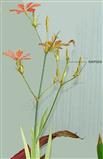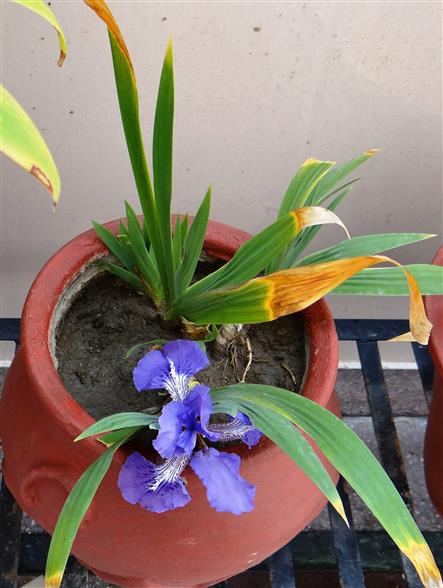IRIDACEAE
Perennial herbs with rhizomes, bulbs or corms. Leaves alternate, basal and cauline, usually distichous, equitant, proximal 2-3 leaves sometimes membranous not reaching much above ground, often oriented edgewise to aerial stem; leaf blade usually linear to ensiform, parallel veined, base sheathing. Inflorescences umbellate, monochasial cymes (Rhipidia), spikes, panicles or solitary flowers; rhipidia or individual flowers subtended and enclosed by 2 opposed leafy or dry bracts (spathes). Flowers usually pedicellate, actinomorphic or zygomorphic, bisexual, showy. Perianth segments (Tepals) 6, in 2 equal or unequal whorls of 3 each, petaloid, free or connate into tube; outer segments known as FALLS and inner ones as STANDARDS. Stamens (2-)3, inserted at base of outer tepals/ perianth segments or in perianth tube; anthers extrorse. Ovary inferior, occasionally superior, mostly 3-locular, ovules few to many per loculus, placentation axile; style single, filiform, usually 3-branched or 3-lobed, branches filiform or expanded, each sometimes divided in distal half, frequently petaloid; stigmas below apices. Fruit a loculicidal capsule. Seeds globose to ellipsoid or pyriform, with or without aril and wings.
69 genera and about1800 species


